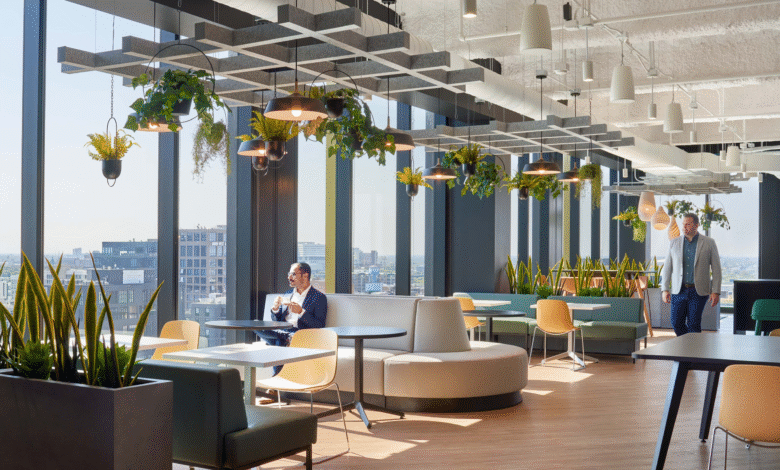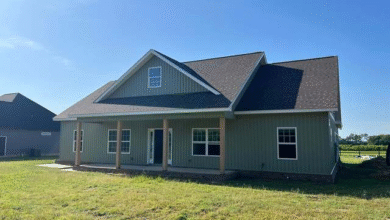The Future of Office Spaces: Trends Shaping Commercial Real Estate

Changing Expectations In The Modern Workplace
The modern workplace is evolving rapidly as organizations recognize that happy, engaged employees lead to better business results. Traditional, compartmentalized office layouts are increasingly viewed as outdated because they often restrict collaboration and limit employee satisfaction. Open-plan designs with communal lounges, creative breakout zones, and versatile meeting spaces are gaining popularity, supporting a blend of teamwork and focused, individual work as needed. Research indicates that workers who feel connected to their colleagues and empowered in their workspace tend to be more productive and less likely to seek employment elsewhere. This has led to a shift in priorities, with many businesses focusing on creating office environments that serve as true hubs for innovation and camaraderie.
As these changes sweep through companies large and small, the expertise of a commercial real estate agent in Washington, DC, becomes valuable for organizations looking to enhance existing office space or find new locations better suited to modern work styles. These professionals offer insights on what tenants are seeking, from building amenities to flexible leasing structures, and can help navigate a market that is increasingly driven by shifting user expectations and new standards of workplace experience.
How Technology Is Transforming Office Environments
The influence of technology on office environments can hardly be overstated. From the moment employees swipe into a building with a smartphone to seamless virtual collaboration with overseas colleagues, technology now touches almost every aspect of daily office life. Cloud-based platforms offer real-time data sharing and tracking. At the same time, smart conference rooms equipped with video walls, digital whiteboards, and touchless controls enable dynamic collaboration, regardless of whether participants are on-site or remote. The integration of Internet of Things (IoT) sensors allows building managers to track everything from space utilization rates to instantaneous adjustments for temperature and lighting, promoting both operational efficiency and employee comfort.
Forward-thinking businesses recognize that differentiating themselves in the talent market requires creating spaces equipped with cutting-edge technology that not only supports productivity but also signals innovation. As noted in Forbes’ insights on the evolving role of technology in the workplace, digital transformation has become a strategic imperative for modern offices. Investments in reliable Wi-Fi, digital visitor management systems, and even AI-driven building security demonstrate a commitment to both safety and employee satisfaction. These trends show no sign of slowing down—in fact, office technology is increasingly seen as essential infrastructure, not an optional upgrade.
Flexible Space Solutions For Businesses
The need for flexibility in office leasing and layout has increased significantly in recent years, as businesses seek scalable solutions that can accommodate fluctuating headcounts, project-based teams, and the evolving economic landscape. Short-term leases and shared coworking spaces, once the domain of startups and freelancers, are now attracting corporations and larger enterprises who desire agility. This evolution enables companies to adjust quickly and efficiently as their needs change, without the logistical burden or cost of signing long-term leases on more space than they require.
- Shared workspaces that encourage organic networking opportunities and resource sharing
- Customizable private offices, which can be reconfigured as teams grow or shrink
- Meeting pods and modular conference rooms are designed for easy reconfiguration.
- Flexible agreements, such as month-to-month or annual rentals, for ultimate adaptability
This flexibility is particularly advantageous in sectors driven by project work, seasonal demand, or innovation cycles. For organizational leaders, the ability to pivot quickly—without the hassle of relocating entire offices—means more time spent on core business activities and less grappling with property logistics.
Sustainability And Green Office Initiatives
Sustainability is no longer a niche consideration in commercial real estate; it has become a baseline expectation for companies looking to attract and retain talent, manage costs, and fulfill their environmental responsibilities. In recent years, office tenants have shown a growing preference for buildings that offer renewable energy systems, eco-friendly materials, and advanced energy management solutions. Noise pollution reduction, air quality initiatives, and biophilic design—which connects people with nature through living walls and indoor gardens—are also gaining momentum.
According to recent green building analysis, commercial properties that prioritize LEED certification, low-carbon construction, and sustainable resource consumption not only appeal to environmentally conscious tenants but also reduce operating costs over time. Companies adopting these principles often report improved employee health and well-being as a positive consequence. Initiatives like the Green Office Movement promoted by UNESCO further highlight how sustainability is becoming embedded in workplace culture. The drive for sustainability is fundamentally reshaping lease negotiations, capital investments, and even how business reputations are perceived.
The Impact Of Remote And Hybrid Work Models
The acceleration of remote and hybrid work models has fundamentally changed how organizations use office space. Instead of holding onto large, permanent desk allocations, many businesses have adopted dynamic seating systems such as “hot desking”, where employees select workstations as needed. This shift is driven by the need to create environments that foster in-person teamwork and social connection, even as more employees work remotely, part-time, or full-time.
Office space is now being reimagined as a venue for intentional gathering—a place where teams connect, brainstorm, and build culture face-to-face. Many organizations have responded by consolidating their physical footprints, investing in remote collaboration technology, and transforming their offices into social and flexible hubs. These adaptive strategies provide resilience in uncertain times and can help organizations manage real estate expenses while maintaining strong employee engagement and a positive company culture.
Prioritizing Employee Well-Being Through Office Design
A growing body of research indicates a clear relationship between workplace design and employee well-being. Offices that optimize natural light, provide clean air, and feature ergonomic workstations tend to see significant boosts in productivity, morale, and overall job satisfaction. The most forward-thinking organizations are going beyond the basics by integrating wellness-focused elements such as quiet, recharging zones, meditation spaces, outdoor terraces, and even onsite healthcare resources.
- Large windows and skylights that fill spaces with daylight
- Adjustable standing desks and ergonomically designed chairs
- Soundproof pods and quiet rooms to foster focus and reduce stress
- On-site gyms, yoga studios, and relaxation areas for holistic health
- Well-stocked hydration stations and healthy food choices
Companies that prioritize well-being in their office spaces are seeing tangible results: lower absenteeism, greater employee loyalty, and an improved ability to recruit in a fiercely competitive market. These efforts communicate a genuine commitment to supporting the whole person, not just the worker.
Predictions For The Next Decade
As technology, sustainability, and employee-centric thinking advance, the changes rippling through the commercial office sector show no signs of slowing down. Tech-enabled, adaptive work environments will become even smarter and more connected, while future office designs will prioritize everything from mental health to environmental impact. Companies will continue to experiment with flexible uses of space, creating dynamic hubs that serve multiple functions—such as an innovation lab, collaborative meeting place, retreat center, and even a digital broadcast studio—all under one roof.
In the decade ahead, the office will remain an integral touchpoint for human connection and creativity, even as remote work continues to rise. By making office development more about people, sustainability, and adaptability, organizations and property owners are preparing for a future where the workplace isn’t just where work gets done—it’s where ideas flourish and communities thrive.




